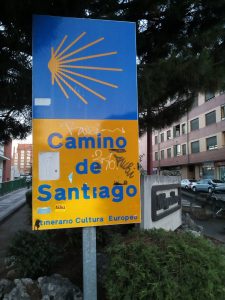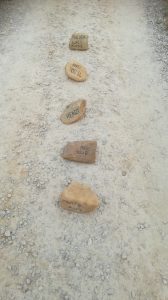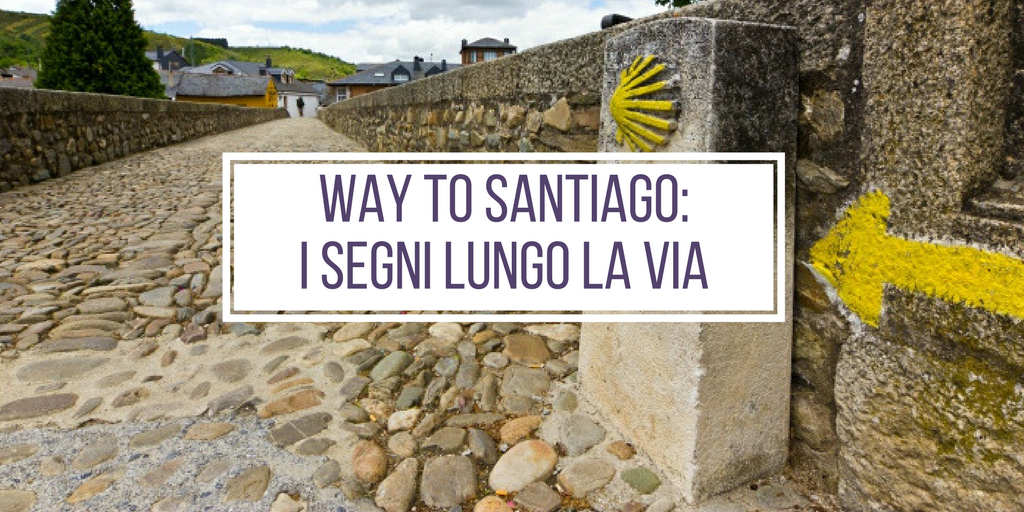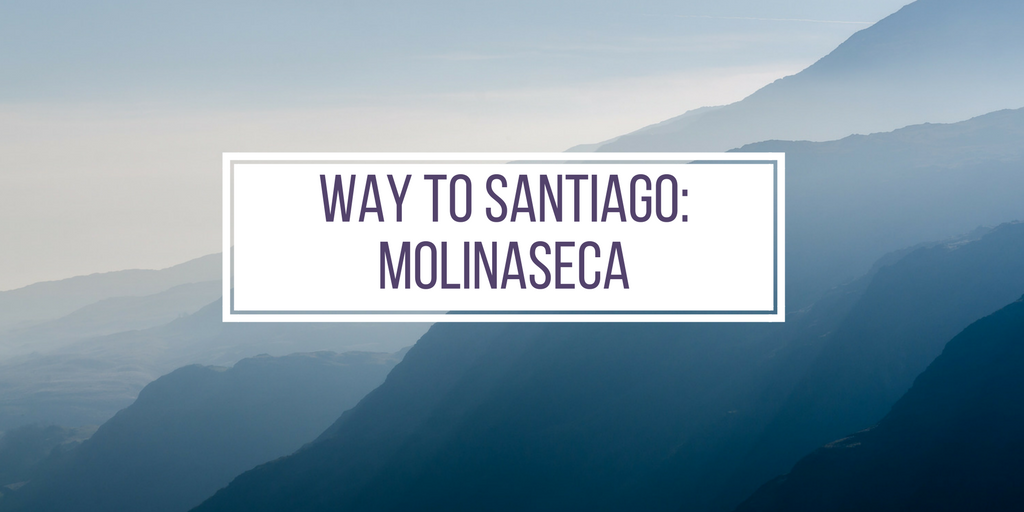Way to Santiago #2: Signs along the way
[Original italian version by Claudia Agrestino]
The sun in Spain can be very hot; in some regions, during certain periods of the year, it can be burning, exactly as the sun in the South of Italy. But, there, it is so even in the areas that don’t have a single trace of sea. In Spain, in Castilla, on the 20th August… it is terribly hot. A scorching weather of those that barely let you breathe, that make you sweat all around your body and force you to change your t-shirt at least three times in a few hours.
This is what we felt when we got off the bus once we arrived at Leòn: we litterally were out of breath. After five hours on the motorway, among the dry fields, surrounded by every nuance of yellow, orange and red existing, we finally came to our destination, loudly falling in a sleeping city. On Sundays, in  Spain, in Castillia, in Leòn, in the most suburban streets you don’t find a single soul, not even to ask for directions. And we, without even knowing where the cardinal points were, or where the city centre was, were looking for a shelter to stay, and maybe to eat something. We saw nothing but houses and unknown streets, until we, casually looking down, found a map of the city with a little crossed placed in a specific place, around what seemed to be the historic centre. We got there and found an albergue, a hostel for the pilgrims. That little sign on the map led us to our destination without we even know what it was.
Spain, in Castillia, in Leòn, in the most suburban streets you don’t find a single soul, not even to ask for directions. And we, without even knowing where the cardinal points were, or where the city centre was, were looking for a shelter to stay, and maybe to eat something. We saw nothing but houses and unknown streets, until we, casually looking down, found a map of the city with a little crossed placed in a specific place, around what seemed to be the historic centre. We got there and found an albergue, a hostel for the pilgrims. That little sign on the map led us to our destination without we even know what it was.
On the road to Santiago there are loads of signs to follow: the first are the yellow arrows painted everywhere, showing the right way, the right road on the next fork and if you have to go up a certain stairway or go down a slope walking alongside the street. As long as you stay on the way of the Camino, you’re certain that you’re not going to get lost; even in the most remote point of the route, you just have to look for “the sign”. You just have to get used to it and learn to carefully look everywhere: on rocks and walls, when you’re on dirt tracks; on the trees when you’re in the woods; on poles, walls and pavements when you’re in the cities. You’re always sure that, even if they’re at first invisible, the signs are going to show up, being them arrows, sketched stars or shells. As already suggested during the last episode, in fact, the name Santiago (St. James) de Compostela (Campus Stellae) comes from the expression “Campus Stellae”, field of stars, that is the place in which the body of the apostle James would have been found; so, a yellow star on a blue background has become one of the symbols of this route. The shell, concha in spanish, is another historical and traditional symbo l: during the middle ages the pilgrims who arrived at the last stop of the Camino (remember: it is not Santiago, it is Finisterre, a cliff overlooking the ocean where people used to think the world ended), used to pick up scallop shells to sew them on their hats and clothes as a testimony of their pilgrimage. This tradition has lived to these days, so much that every pilgrim gets his shell at the beginning of his path, to attach it to his backpack: during the walk, these pilgrims look for little brass shells carved along the city pavements that indicate the right way.
l: during the middle ages the pilgrims who arrived at the last stop of the Camino (remember: it is not Santiago, it is Finisterre, a cliff overlooking the ocean where people used to think the world ended), used to pick up scallop shells to sew them on their hats and clothes as a testimony of their pilgrimage. This tradition has lived to these days, so much that every pilgrim gets his shell at the beginning of his path, to attach it to his backpack: during the walk, these pilgrims look for little brass shells carved along the city pavements that indicate the right way.
3 o’clock pm, a scorching spanish afternoon, a dozen kilometres away from Astorga, the stage of the day: a dirt track, red soil, sunburnt weeds and brambles everywhere. Having arrived at a big fork we realized we didn’t know where to go. No walls, rock or pavements anywhere. No shadows, and the hot weather, together with an annoying sunbeam, make you forceless, physically and mentally. In those moments you just want to understand which way to go and get to your destination as soon as possible, you lose every hope when there’s no one and nothing around. But the arrows always show up, where are the damn shells, where are the signs with the stars? For the second time in a few days, looking down in despair got crucial: on the ground there was an arrow made of many round stones, almost camouflaged with the path, and they said to go ahead to the right. I knew it! You can’t get lost on the way; it’s like something intervenes in the moments of trouble, guiding you to your destination sowing hee and the hints that are almost unperceivable, making possible for you to find them.
Further, some kilometres away from the arrive, a sentence, almost a perfect mantra for that moment, shows up on a sequence of stones: “With hope in your heart, and you’ll never walk alone”.

Credits:
Cover Image by artspecialday.com
photos by Camilla Figini



